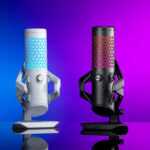Processor: Snapdragon 820 with Adreno 530 GPU

| Model number | Semiconductor technology | CPU instruction set | CPU | GPU | DSP | Memory technology |
| Snapdragon 820 | 14 nm | ARMv8 | 4 Cores – Kryo up to 2.15 Ghz 64bits | Adreno 530 64bits | Hexagon 680 | LPDDR4 1866Mhz |
The Snapdragon 820 is the first 800-series chipset to be built on a power-efficient 14nm FinFET process, this allows its four Kyro cores to be clocked at over 2.15GHz and the graphics processor has been upgraded from Adreno 430 to a newer generation Adreno 530. This is the third 800-class chip (after the 800, 810) to record 4K UHD video (with supports both AVC and HEVC codecs); it also supports up to 28MP cameras with its dual ISP. It’s paired with an X12 modem for Cat. 7 LTE – up to 600Mbps downloads and 150Mbps uploads. The chipset also supports Wi-Fi 802.11ac.
The Snapdragon 820 processor offers many advantages:
-Integrated X12 LTE
• LTE Advanced Carrier Aggregation up to 3×20 MHz in the downlink and 2x20MHz uplink
• Support for 256-QAM in the downlink and 64-QAM in the uplink
• Up to 600 Mbps (LTE Cat 7) speeds in the downlink, and up to 150 Mbps in the uplink
• Support for Snapdragon All Mode, including LTE-FDD, LTE-TDD, CDMA, UMTS/HSPA+ and TD-SDCMA
– TruSignal Multi-Antenna Boost support
– Professional camera features and DSLR-like image quality with dual image signal processors
– Qualcomm® Hexagon™ 680 DSP with HVX provides battery-efficient enhancements to audio, video, and computer vision use cases
– Qualcomm® Adreno™ 530 PC-class graphics with support for advanced APIs and Hardware Tessellation
– Comprehensive Qualcomm® Reference Design with support for Qualcomm® Global Pass
– Snapdragon sensor core supports new always-on use cases at reduced power levels and cost
– Software levergable across other Snapdragon 820 series processors
Audio: 24-bit DAC, High-Res built-in for headset support.

- Qualcomm WCD9335 Audio Codec
The Qualcomm Aqstic audio codec has an integrated DAC (Digital-to-Analog) converter that supports up to 192-kHz/24-bit playback. The audio codec also supports dual oscillators; the dual-clock design supports sampling frequencies 44.1kHz and 48kHz independently so your music files can be processed at native sampling rates without any conversion.
Once the analog signal is converted by the DAC, it still needs to be amplified for the headphone experience. The Aqstc audio codec is designed to deliver the amplification performance that is usually captured by impressive SNR and THD+N numbers. For audio geeks, SNR (Signal-to-Noise Ratio) and THD+N (Total Harmonic Distortion + N) are specs that determine the dynamic range and signal purity.
- NXP Smart Amplifier
The NXP smart amplifier is another piece engineered to deliver even more ohm to your 3.5mm and five-magnet speaker. Your music can be loud and crystal-clear, defined sound thanks to the wide dynamic range and low noise floor on the smart amplifier.

If you have a high definition Bluetooth “aptX” headset and you will be able to enjoy on the ASUS Zenfone 3 Deluxe. Qualcomm aptX make use of the Bluetooth connection data pipeline to transmit bits of data between devices and the pipeline has a maximum width, it can flow large audio files to the device. AptX also solves the problem of sending pure audio wirelessly over Bluetooth by reducing the size of the audio files so they can be squeezed through the wireless pipeline without affecting the sound quality.
AptX supports music resolutions of up to 24-bit/96kHz which is actually better than the quality of audio stored on CDs which is 16-bit/44.1kHz.
GPS Navigation Testing
| GPS Signal Support | |
| A-GPS – Assisted Global Positioning System |
United States Navigation Satellite System |
| GLONASS – Global Navigation Satellite System |
Russian Navigation Satellite System |
| BDS – BeiDou Navigation Satellite System |
Chinese Satellite Navigation System |
When we test the phone in the middle of the Helix Bridge, the phone can capture a GPS signal and show an accurate location. We able to connect 19 satellite signal under the hot sun and we walk around to track the GPS signal and it shows good result.
Quick Charge 3.0: Next-gen fast charging technology
Quick Charge 3.0 employs Intelligent Negotiation for Optimum Voltage (INOV), an algorithm which allows your portable device to determine what power level to request at any point in time, enabling optimum power transfer while maximizing efficiency. It also supports wider voltage options, allowing a mobile device to dynamically adjust to the ideal voltage level supported by that specific device. Specifically, Quick Charge 3.0 offers a more granular range of voltages: 200mV increments, from 3.6V to 20V. That way your phone can target one of dozens of power levels.
Benchmark result
We will be testing the performance of the two devices Sony Xperia XZ and ASUS Zenfone 3 Deluxe.
| Model | Sony Xperia XZ | ASUS Zenfone 3 Deluxe |
| Display | 5.2 inch | 5.7 inch |
| Resolution | 1080 x 1920 FHD | 1080 x 1920 FHD |
| Processor | Snapdragon 820 | Snapdragon 820 |
| Clock speed | 300Mhz – 2150Mhz | 300Mhz – 2150Mhz |
| Cores | 4 Cores | 4 Cores |
| Graphics | Snapdragon Adreno 530 | Snapdragon Adreno 530 |
| RAM | DDR4L – 3GB | DDR4L – 6GB |
| Memory | 64GB | 64GB |
| Battery | Li-ion 2900mAh | Li-ion 3000mAh |
| Android version | 6.0.1 | 6.0.1 |
Battery Benchmark
We will use Anker PowerPort+ 6 with Quick Charge 3.0 charger to benchmark the charging speed.
- 1st Test: YouTube playback loop with 100% brightness, Volume 100% and wireless connection only.
- 2nd Test: Quick charge 3.0 to charge the phone from 1% to 100%
Notice: Both phones are set to high performance


PCMark for Android
PCMark for Android introduces a fresh approach to benchmarking smartphones and tablets. It measures the performance and battery life of the device as a complete unit rather than a set of isolated components. And its tests are based on common, everyday tasks instead of abstract algorithms.




3DMark for Android
3DMark is used by millions of people, hundreds of hardware review sites and many of the world’s leading technology companies. It’s the industry standard benchmark for graphics performance measurement, a professional-grade tool available to home users for free.



AnTuTu Bechmark
AnTuTu Benchmark is a comprehensive Android Benchmarking application. It includes “Memory Performance”, “CPU Integer Performance”, “CPU Floating Point Performance”, “2D and 3D Graphics Performance”, “SD card read-write speed”, “Database IO” performance testing.

AS SD Benchmark
Use A1 SD Benchmark your phone & tablet SD card, RAM and memory, to test IO read / write speed (Quick, Long, Random I/O and Accurate) and check media performance.


Vellamo Benchmark
Vellamo is designed to be an accurate, easy-to-use suite of system-level benchmarks for devices based on Android 4.0 forward. In Vellamo we want to enable performance enthusiasts to really understand their system, and how it compares to other systems, and our mission has just begun. Vellamo began as a mobile web benchmarking tool that today has expanded to include three primary Chapters. The Browser Chapter evaluates mobile web browser performance, the Multicore Chapter measures the synergy of multiple CPU cores, and the Metal Chapter measures the single core CPU subsystem performance of mobile processors.

GeekBench
Geekbench 4 includes updated CPU tests that model real-world tasks and applications. These tests are designed to quickly and accurately measure mobile CPU performance. Every Geekbench 4 CPU test is multi-core aware, allowing Geekbench 4 to measure the full potential of your device’s CPU.


Previous<<< >>> Coming Soon






